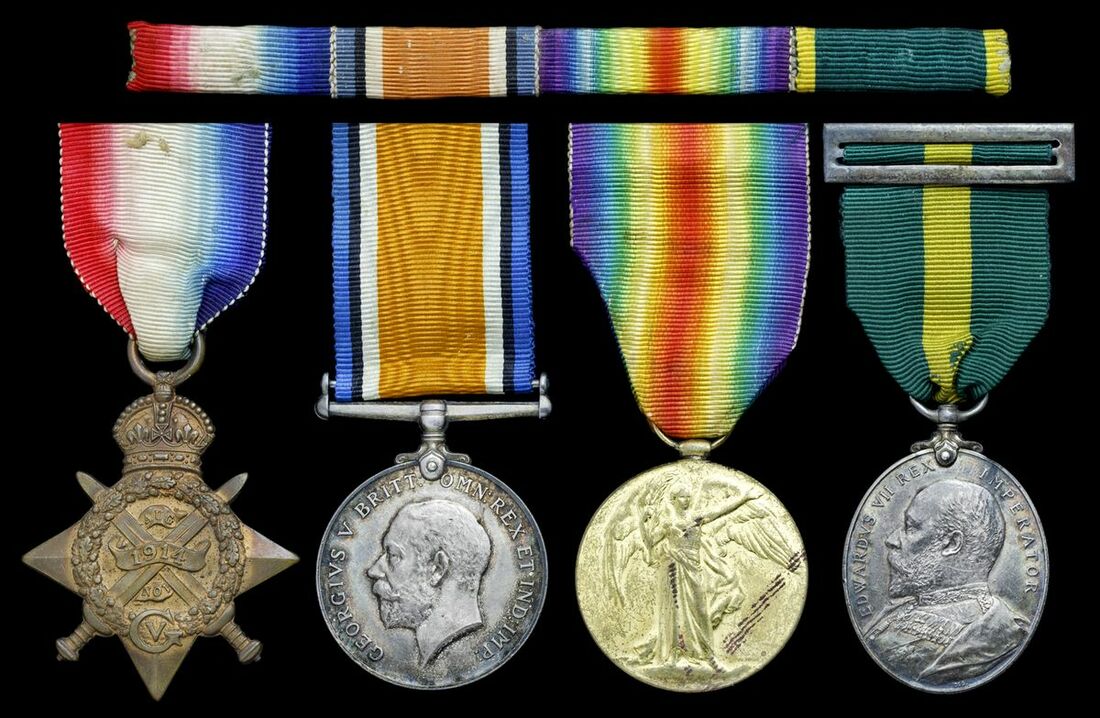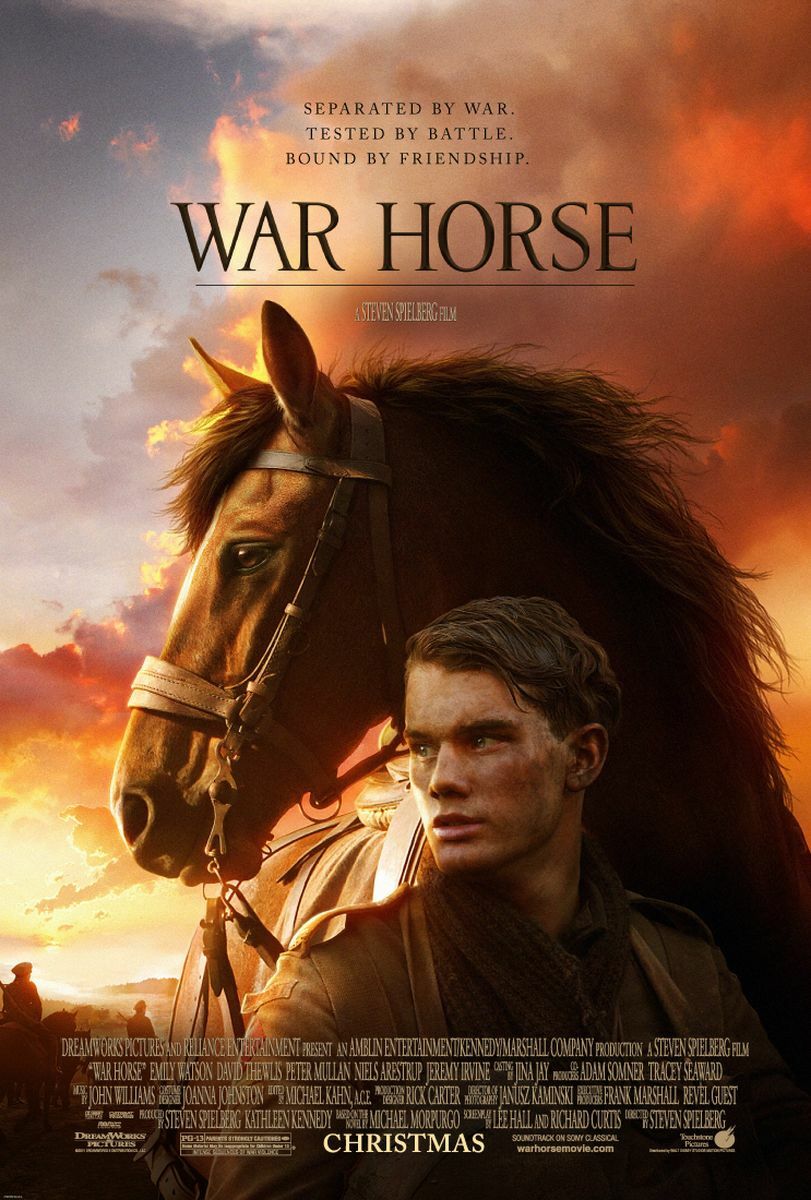Auction: 24002 - Orders, Decorations and Medals
Lot: 110
Four: Lieutenant, late Squadron Sergeant-Major H. G. Franklin, North Somerset Yeomanry, the unit which inspired 'War Horse'
1914 Star (404 Sq. S. Mjr. H. Franklin. 1/1 N. Som: Yeo.); British War and Victory Medals (2. Lieut. H. G. Franklin.); Territorial Force Efficiency Medal, E.VII.R. (404 Sq. S. Mjr. H. Franklin. N. Somerset: Yeo.), good very fine (4)
Hector George Franklin was born at Barton Regis, Gloucestershire on 25 September 1881, was educated at Parkland School, Kingsdown, Bristol and served with the North Somerset Yeomanry before the Great War. Having enlisted in July 1900, he earned his T.F.E.M. (and is noted as entitled to the 'Coronation Medal') with 'B' Squadron in the reign of King Edward VII, he was the proprietor of the Cliff Hotel at Cheddar and served in France as a Squadron Sergeant-Major with the 1/1st Battalion from 2 November 1914, when the unit formed part of the 6th Cavalry Brigade, 3rd Cavalry Division.
The unit during the 1914 campaign were the inspiration for Michael Morpurgo's 1982 book War Horse, which was later adapted for Steven Spielberg's 2012 movie of the same name and also on the stage.
Franklin would have shared in their actions and would have been thrown into the Second Battle of Ypres in May 1915, when:
'‘Three hundred men of the North Somerset Yeomanry took over the front line on the left of Bellwaarde Lake on the 12th, and accommodated themselves in the shallow holes among the trees which fringed the lake. This position, they were told, they must hold at all costs. The 13th found the men soaked to the skin, for rain had fallen without ceasing for two days. At 1 o'clock in the morning they were warned that the enemy might attack later in the day. There was no protection in the scooped-out holes in which they crouched, and when they asked for sandbags to build up parapets they were told there were none.
At 4 a.m. the enemy bombardment began. Shell after shell burst in the trenches. Men were buried, while others crept out of their shattered ditches and manned the craters the high explosives had made. The dead lay about in all directions. At 5.15 a.m. the shelling ceased, but half-an-hour later the heavens opened once more, and iron and lead rained down with redoubled fury.
The thunder continued long after a feeble dawn had made its appearance. At 7 a.m. the line on the left had fallen back, but the North Somersets with the 3rd Dragoons Guard still clung to their craters and ditches, dazed and shattered though they were. Not one thought of death that was imminent; they knew only that they must hang on at all costs, for such were their orders. About 8.30 the enemy swarmed out of his trenches, confident that few men could live through such a cannonade. Few there were, indeed, but the little groups of Yeomen were not dismayed. German bombers were met with bombs, and the wounded picked up their rifles and fired incessantly. The enemy fell back, and, angered at the repulse, his guns began the shelling once more. At 11 a.m. the bombardment lessened, and the Germans began to concentrate on the left where the line had weakened. Here most of the fighting for the remainder of the day occurred, and, because the North Somersets had held their ground, the Royal Horse Guards were able to restore the line in the afternoons. About midnight the North Somersets were relieved having lost more than half their number.’
He was commissioned 2nd Lieutenant into the 2/1st Battalion in September 1915 but injured his knee in October 1915. Having recovered, on 10 January 1916 he again damaged the cartilage of his knee whilst mounting a horse on duty and was operated upon at Tidworth Officers' Hospital. Having served with his unit in France and latterly in Ireland, he suffered with an inguinal hernia and was rated as permanently unfit in February 1919. He had his Medals issued to him at Cheddar and died in October 1950; sold together with his riband bar and copied Service Record.
Subject to 20% VAT on Buyer’s Premium. For more information please view Terms and Conditions for Buyers.
Sold for
£420
Starting price
£140







